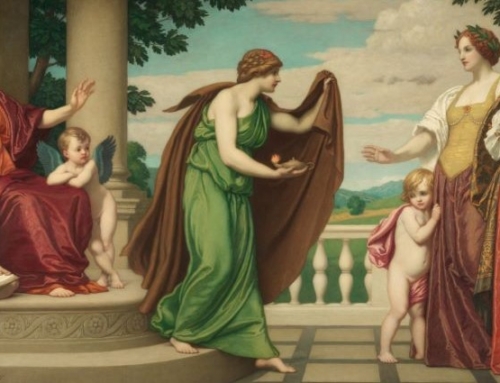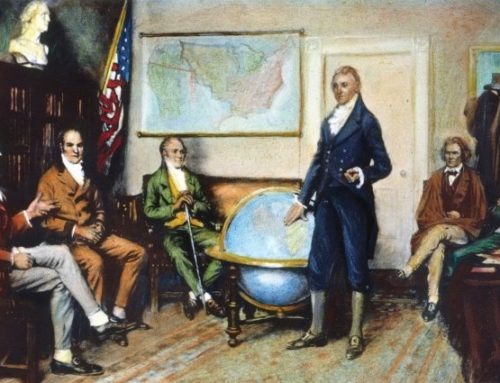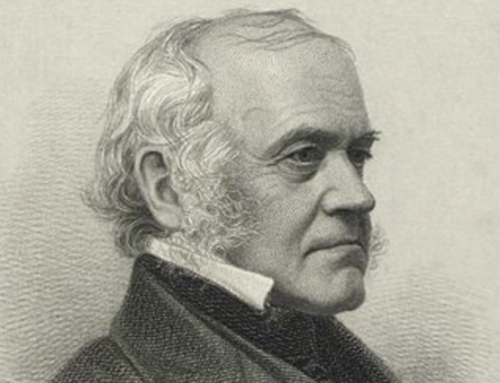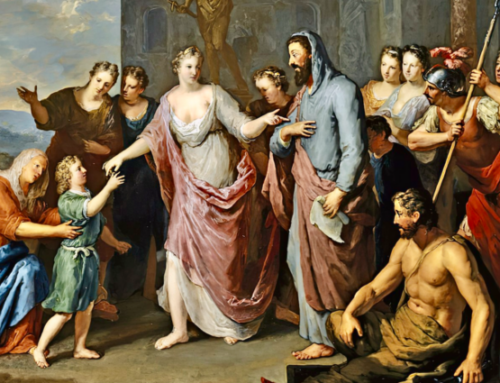By a providence that nervous chroniclers call “luck,” the fire in Paris did not ruin the cathedral of Notre Dame. Most of its major parts remain, however fragile. Since so many have offered unsolicited opinions about the future of the cathedral, I would like to make an immodest proposal.
 A fad for picturesque ruins grew luxuriantly in the Romantic Revival from the end of the eighteenth century to about the mid-nineteenth, and where there were no real ruins, “follies” recreated them. Real ruins remain in a kaleidoscope of times and climes: Machu Picchu in Peru, Ayutthaya in Thailand, Stonehenge in England, Luxor in Egypt, and Baalbek in Lebanon. Some were simply left unfinished out of fear of curses, as with the Ta Keo temple in Cambodia, and the Mingun Pahtodawgyi (which would have been a 500-foot-tall pagoda) in present-day Mayanmar. Work on the Hassan Tower in Morocco, begun in 1195, stopped at the death of the sultan Yacoub al Mansur.
A fad for picturesque ruins grew luxuriantly in the Romantic Revival from the end of the eighteenth century to about the mid-nineteenth, and where there were no real ruins, “follies” recreated them. Real ruins remain in a kaleidoscope of times and climes: Machu Picchu in Peru, Ayutthaya in Thailand, Stonehenge in England, Luxor in Egypt, and Baalbek in Lebanon. Some were simply left unfinished out of fear of curses, as with the Ta Keo temple in Cambodia, and the Mingun Pahtodawgyi (which would have been a 500-foot-tall pagoda) in present-day Mayanmar. Work on the Hassan Tower in Morocco, begun in 1195, stopped at the death of the sultan Yacoub al Mansur.
Rather more prosaically, the National Monument of Scotland came to be called “Scotland’s Shame” in the nineteenth century because money ran out. Bara Kaman, the mausoleum of Ali Adil Shaha II, was left unfinished to prevent it from overshadowing Gom Gobaz, the mausoleum of the Sultan of Bijapur. Tourists ogle the walls of Pompeii submerged by a volcano. A young Oxonian won the Newdigate Prize for his poem about Petra in Jordan: the “rose-red city half as old as time.” It decayed only because it had been abandoned, but nearly a million tourists go there each year now.
That young poet John William Burgon wrote those lines in the same year that Newman became a Catholic. They were parodied in doggerel about port, invoking Newman’s 90-year-old tutor Thomas Short: “That rose-red liquor, half as old as Short.” But as ruins go, if not one stone is left upon another even in Jerusalem, their very existence cries out in ways that men do not, or even will not do.
***
By a providence that nervous chroniclers call “luck,” the fire in Paris did not ruin the cathedral of Notre Dame. Most of its major parts remain, however fragile at the moment. Even the north rose window glows as the gift of St. Louis IX, who commissioned it in 1260. Its eighty-eight images, or “medallions,” are a mathematical canticle to eternity.
His great-grandfather, Louis VII, provided one of the great scenes of medieval romance when he laid the cornerstone in 1163 along with Pope Alexander III. The king had supported the pope during a papal schism, and both were men of high energy and expansive vision. The pope devoted himself to strengthening the churches in Finland, Hungary, Portugal, Scotland, and Ireland. Likewise, King Louis VII consolidated his own duchies, visited Hungary, and went on to the Holy Land, having nearly been killed by Turks outside Laodicea. That familiar name is a constant reminder that Laodicean mediocrity, a spiritual affliction a thousand years before King Louis and Pope Alexander, and one which still haunts and harrows episcopates in our own day (Rev. 3:15-16).
A year after the pope and the king laid the cornerstone, they welcomed the exiled Thomas Becket. His former mentor and later persecutor, Henry II, had become King of England as well as Duke of Normandy and Aquitaine and Count of Anjou. Seven years after the construction began on the cathedral, Becket would be martyred. Things were more complicated by the fact that Henry had married the first wife of Louis, the powerful Eleanor, 18 years earlier, immediately upon the annulment of her marriage to Louis.
Pope Alexander quickly canonized Becket in 1174 and showed his magnanimity by forgiving Henry after due penance with a sorrow not altogether feigned, and creating him Lord of Ireland. The pope was acting upon the controversial bull Laudabiliter of his predecessor Adrian IV. But Henry also responded to an appeal for protection from the King of Leinster, Diarmait Mac Murchada, against the threats of the High King Ruaidrí Ua Conchobair.
St. Malachy, archbishop of Armagh had tried his best to revive the Faith after it had fallen into desuetude in the melancholy and chaotic centuries after Palladius and Patrick, the sacraments largely neglected or abandoned. He restored the Latin liturgy and chants where Gaelic had crept in, and required the blessing of marriages. Passing through France on return from his second trip to Rome in 1148, St. Malachy died in Clairvaux in the arms of St. Bernard, having told him that the Gaels were “Christian in name, in fact pagans.”
Pope Alexander envisioned the Anglo-Norman invasion of Ireland as an evangelistic obligation, not only to the Irish but also to the Vikings of Dublin. Though King of England, the Plantagenet Henry II spoke only French as did most of his army. From then on in France, contesting claims to rule were fraught with extravagant gestures: in 1431, shortly after Charles VII was crowned as King of France at Rheims with St. Joan of Arc in attendance (accompanied by Scottish bagpipes), Henry VI was crowned as King of France in Paris in Notre Dame at the age of 10: two years after he was crowned King of England in Westminster Abbey, his short legs dangling from the throne that is still used.
℘℘℘
The desecration of Notre Dame in 1548 by Huguenots was matched only by the enormities of the French Revolution. The turning tides of belief and unbelief have not affected a common sense that the cathedral is like a heart of the nation, in stark contrast to the frigidity of the Pantheon. While it has been a focus for saints, there are others whose attitude is more tentative, like that of Winston Churchill, who did not pretend to mysticism and explained that he supported his Church of England like a flying buttress: from without.
At the liberation of Paris in August of 1944, a very mixed throng of people instinctively marched to the cathedral for a chanting of the Te Deum led by Charles De Gaulle: a difficult man but a true Catholic. He banned Emmanuel Cardinal Suhard from attending, because that archbishop of Paris, though suspect by the Nazis, seemed in his accommodation of the Vichy government to have been too Laodicean for the general.
Malcolm Muggeridge witnessed the scene as a British intelligence officer, when a gunshot rang from one of the arches. “The effect was fantastic. The huge congregation who had all been standing suddenly fell flat on their faces… There was a single exception; one solitary figure, like a lonely giant. It was, of course, de Gaulle. Thenceforth, that was how I always saw him – towering and alone; the rest, prostrate.”
The buttresses and walls of Notre Dame remain, though its roof is gone. Outrageous proposals for modernizing it by “starchitects,” some of whom are of the dystopian mentality that imposed upon Paris the cultural incubus of La Defense in the department of Hauts-de-Seine, the Centre Pompidou and, one dare say, the Louvre Pyramid. They bring to mind part of Hilaire Belloc’s lapidary reverie in the solitude of the Sahara while gazing upon the ruins of Timgad:
The Barbarian hopes – and that is the mark of him, that he can have his cake and eat it too. He will consume what civilization has slowly produced after generations of selection and effort, but he will not be at pains to replace such goods, nor indeed has he a comprehension of the virtue that has brought them into being. Discipline seems to him irrational, on which account he is ever marveling that civilization should have offended him with priests and soldiers… In a word, the Barbarian is discoverable everywhere in this, that he cannot make: that he can befog and destroy but that he cannot sustain; and of every Barbarian in the decline or peril of every civilization exactly that has been true.
The French Senate has passed a bill requiring that the cathedral be restored to its “last known visual state.” This will include replicating the spire of the 30-year-old Eugène Viollet-le-Duc. If they stick to that commitment it will be a triumph. It was only by the fortune of circumstance that the cathedral was not destroyed by Renaissance and Baroque snobs who thought it was an eyesore. The style known as francigenum opus became known as “gothic” only in the 1530s, when Giorgio Vasari mocked it for falling short of classical symmetry.
But an instinct inseparable from a desire to soar and shine draws all sorts to what began in the twelfth century, when the Abbé Suger tutored that young man who planned on an ecclesiastical vocation and was surprised to find himself titled Louis VII upon the death of his elder brother, Philippe. Queen Eleanor complained that he was “monkish.”
That “new style” is so organic that the restorers Jean-Baptiste Lassus and Viollet-le-Duc, not without their detractors, could add their own touches—like the transept fleche with its crocks and statues, and the capricious gargoyles or chimera, which were added between 1843 and 1864—all in the same spirit and free of pastiche.
***
To everyone’s recollections of the cathedral, I can add my own, for in that cathedral I had one of two experiences of my life that affected me definitively. The other I shall leave for another time, but I pay more attention now than I did in the summer of 1967, when I entered the cathedral for the first time as a student.
I was still an Anglican, and unfamiliar with the protocols of lighting votive candles, so I imitated how others did it before the fourteenth-century statue of the Virgin of Paris. I was moved by more than a tourist’s curiosity, and perhaps I sensed something other than the aesthetic of the statue’s high gothic contrapposto. Anyway, 16 years later back in Paris, I was a Catholic in Holy Orders and was able to attend Easter Vespers, but had to stand by the west doors because of the crowd. A man, who I assumed was some sort of usher, approached me and led me near to the altar and gave me the one vacant chair, which was directly beneath the Virgin of Paris. For a second time, I lit a candle.
Since so many have offered unsolicited opinions about the future of the cathedral, I would make an immodest proposal. For various unrecorded reasons, the cathedral was never finished, for surely Suger and Louis and Alexander envisioned spires that would be the prototypes of Chartres and Cologne and scores of others. After 1250, the west towers were left as they are now.
Our Lord gave his counsel with which even the Senate of France would agree: “For which of you, desiring to build a tower, does not first sit down and count the cost, whether he has enough to complete it?” Two spires would probably cost much less than a ballistic missile. Those who would object to the cost are probably the intractable types whose citation of Scripture is confined unwittingly to the tragic apostle (vid. Matt. 26:9; John 12:5). Viollet-le-Duc actually did a sketch for such towers, even taking into account the subtle difference in their sizes, the north being slightly larger.
Predictably, there will be those who are so accustomed to the unfinished condition they prefer it that way. The sentiment reminds me of a woman at the Academy of Music in the 1970s when Eugene Ormandy received an ovation as he made his first appearance after hip replacement surgery. She muttered to me: “He looked more poetic with his limp.” Admittedly, in his Projet de restauration of 1843, Viollet-le-Duc decides against building the western spires because that “would be remarkable, but would no longer be Notre-Dame de Paris.”
Yet that may have been the influence of the project’s co-author, Lessus. Exactly twenty years later, he writes in the first volume of Entretiens sur l’architecture: “The work is not yet finished – the two towers should be terminated by two spires to complete and explain the carefully studied lines of the lower structure.”
Well, one can indulge a little wishful thinking, and what is most important is the restoration of what was lost. But to realize what was meant to be in the first place, would confirm the sacred words of the prophet at the time of the Second Temple:
Who is left among you who saw this house in its former glory? And how do you see it now? In comparison with it, is this not in your eyes as nothing? … “The silver is Mine, and the gold is Mine,” says the Lord of hosts. “The glory of this latter house shall be greater than the former,” says the Lord of hosts. “And in this place I will give peace…”
Republished with gracious permission from Crisis Magazine (July 2019).
The Imaginative Conservative applies the principle of appreciation to the discussion of culture and politics—we approach dialogue with magnanimity rather than with mere civility. Will you help us remain a refreshing oasis in the increasingly contentious arena of modern discourse? Please consider donating now.
Editor’s Note: The featured image is a postcard depicting Notre Dame of Paris, courtesy of the Library of Congress.







Leave A Comment